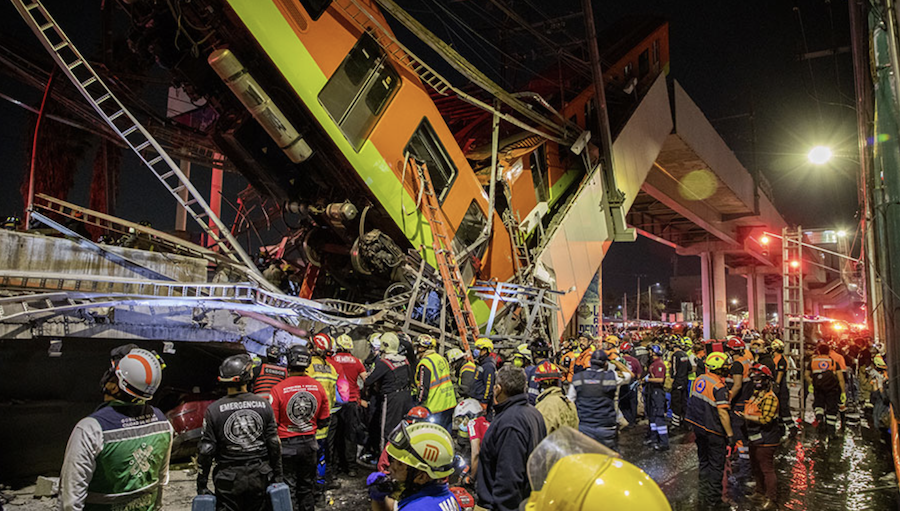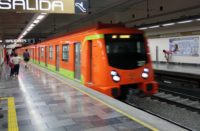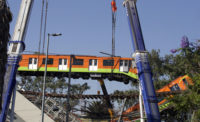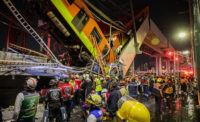Multiple Construction Errors Contributed to Mexico Subway Collapse

Faulty welds, varying concrete and poorly placed studs appear to have contributed to subway overpass collapse. Photo by Jair Cabrera Torres/picture alliance via Getty Images
The May 3 collapse of an elevated section of the Line 12 subway in Mexico City that killed 26 passengers appears to have resulted from multiple construction faults, according to a risk management firm's preliminary report.
The findings, released June 16 by Norwegian firm DNV, identify faults such as deficient welding of metal studs connecting the structure’s steel beams with a precast concrete track bed. Stud placement was inconsistent as well, the report says, with some attached with the removable ceramic rings still in place.
Investigators also found variations in the type of concrete used to build the structure, and that many steel joints had been poorly welded.
DNV cautioned that structural failure as the cause of the collapse is only a hypothesis at this point and that its investigation is ongoing. The company is scheduled to issue two additional reports in July and August.
Parallel investigations are underway by the city’s Attorney General and the College of Civil Engineers of Mexico, the country’s civil engineering professional society.
The nighttime collapse occurred as a four-car subway neared a suburban station southeast of the city center. A steel girder collapsed, sending two rail cars plummeting about 16 ft into the median of an underlying boulevard. The event also caused dozens of injuries.
The incident was the latest in a series of problems for the Line 12 subway, built between 2008 and 2012 by a consortium that included Mexico’s Ingenieros Civiles Asociados (ICA) and Carso Infraestructura y Construcción (CICSA) , with Alstom Transport of France handling subway electrification and control systems. Half of the 12.6-mile subway, including where the collapse occurred, is elevated due to the area’s complex geotechnical conditions.
Mexico City Mayor Claudia Sheinbaum has vowed to restore Line 12 to safe operation as soon as possible, commissioning a multidisciplinary team to develop a reinforcement and rehabilitation plan.




